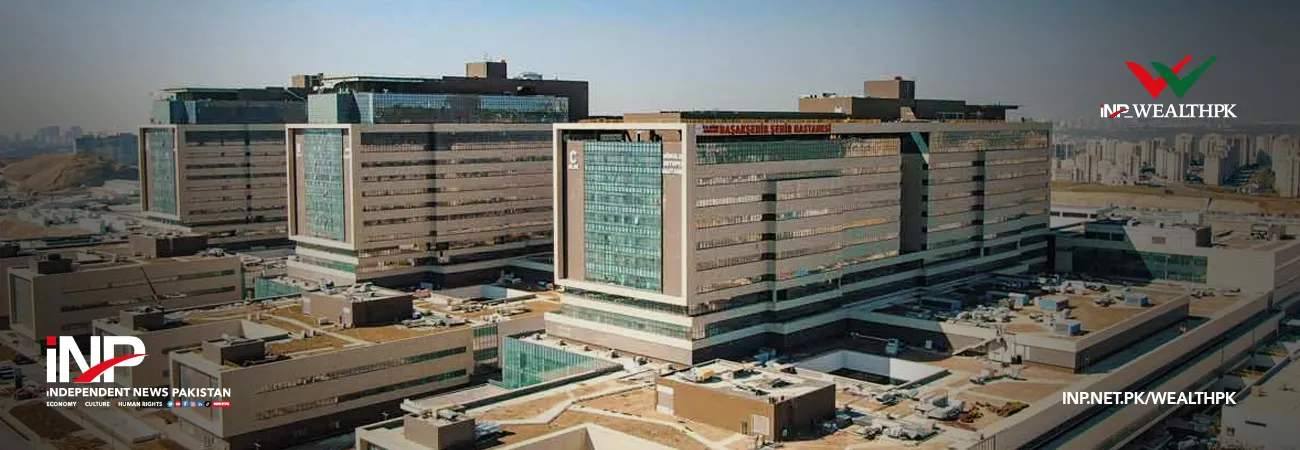آئی این پی ویلتھ پی کے
Amir Saeed

Pakistan has achieved a noteworthy increase in internet penetration in recent years, with a 56.5% coverage nationwide. This development shows the country's dedication to promoting economic growth and improving digital connection. Notwithstanding this remarkable figure, there are still significant infrastructural gaps that need to be bridged to maintain and expedite the broadband expansion. The increase in internet availability is evidence of the country's determined attempts to upgrade its network infrastructure. This expansion has been made possible by government initiatives such as the Digital Pakistan Policy and the creation of regulatory frameworks. These initiatives seek to advance technical innovation, boost digital literacy and expand internet access. Talking to WealthPK, Ahad Nazir, Associate Research Fellow at Sustainable Development Policy Institute (SDPI), said that investments made in both urban and rural areas have been a key factor in the broadband expansion.
“High-speed fiber optic networks have been established in urban areas to give citizens access to quicker and more reliable internet services.” He pointed out that significant infrastructural gaps are nevertheless an impediment to the wider rollout of broadband services. “Particular challenges include poor infrastructure, limited financial resources and logistical challenges in rural and impoverished locations. These challenges make it more difficult to provide reliable, high-quality internet connection in every part of the country.” He said that to close these gaps, a multifaceted strategy is needed. “It is imperative to expand the physical infrastructure by installing more optic fiber cables and enhancing network dependability. Additionally, spending money on wireless and satellite technologies would provide more adaptable ways to reach neglected areas.” Ahad further suggested the government foster incentives for investment in difficult locations, ensure fair competition among service providers, and put laws in place that support infrastructure development. “Simplifying the regulatory procedures can also cut down on expenses and delays related to broadband rollout.”
“To solve the infrastructural issues, cooperation amongst stakeholders, including governmental bodies, commercial enterprises, and international organisations is crucial. Together, they can overcome the obstacles to the growth of broadband by pooling resources, exchanging knowledge and creating creative solutions.” Talking to WealthPK, Dr Jorkanda Tomkova, a consultant with the World Bank and an IT and digitisation expert, said that more people with broadband access has significant economic benefits. “Improved connectivity makes it easier to do remote work, engage in e-commerce, and provide digital education to support economic expansion. Reliable internet connectivity helps entrepreneurs and small companies enter new markets and create new opportunities, which will spur economic diversity and innovation.” She highlighted that broadband growth has equally important social effects. “Increased social interaction and community involvement, access to telemedicine, and improved educational outcomes can all be facilitated by improved internet connection. In places with limited access to traditional services and resources, these advantages are particularly noticeable.”
“To ensure equitable broadband service expansion, specific initiatives and subsidies might be required. To avoid digital exclusion, low-income households and vulnerable communities need special attention. Bridging the digital divide can be achieved by offering inexpensive internet options and covering costs for marginalised communities.” She further explained that technology plays an increasingly important role in the times to come. “Next-generation wireless systems and 5G are examples of network technology innovations that could improve internet services even more. Maintaining the growth momentum and filling in the gaps requires integrating these technologies into the country's internet infrastructure.” Jorkanda said though the country had achieved a noteworthy 56.5% broadband coverage rate, there are still infrastructural gaps that must be filled to achieve full digital inclusion. “Encouraging legislation, sustained investment and cooperative endeavours are important to ensure that every citizen gets the advantages offered by broadband access.”
Credit: INP-WealthPk












